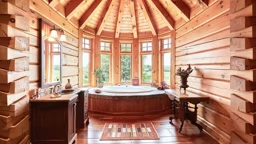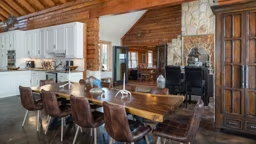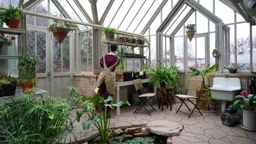
Defined as non-native species that are likely to cause harm to wildlife or an environment, invasive plants sometimes have an appealing look, thanks to flowers or colorful leaves. But according to the U.S. Forest Service, they can get ugly when it comes to their impact on a landscape.
Invasive species can degrade wildlife habitat, negatively affect water quality, increase soil erosion, block out other plants and compete with native species for soil nutrients and sunlight. That’s a big price to pay for a few flowers.
Sometimes you can spot invasive plants easily because, well, they tend to invade — taking over a garden quickly and becoming challenging to control. Others are more subtle in their attack.
Don’t want to wage war on your landscape? You may want to steer clear of these six lovely —but risky —species. If you like the look of these varieties, you can replicate that appeal with plants that are easier to manage and play well with others.
We review the beastly traits of these beauties and offer kinder, gentler garden options.

English Ivy
Like other types of invasive climbing plants, such as kudzu, ivy spreads quickly and can cover everything it encounters, from fences and walls to trees and gazebos. You can try to cut it back, but it’s easier to remove it completely. Still want ivy? Plant Virginia creeper (which can be aggressive but not invasive) or Carolina jessamine instead.

Norway Maple
A large, deciduous tree that can grow to 50 feet tall, Norway maple has the majestic look of other maples, but spreads much more aggressively. Because it has a shallow, dense root system, it can quickly smother surrounding plants and grass, leaving you with seedlings you need to pull up often. Consider swapping it with a sugar maple.

Trumpet Vine
It may seem like an ideal plant to provide flower-filled shade for an arbor or pergola, thanks to its thick woody vines, showy red-orange flowers and fast-growing nature. But its roots run deep and wide, and before you know it, this vine will pop up in places you never intended — often several feet from its origin — taking over your yard (and your house) in the blink of an eye. Once established, it’s hard to remove. If you love the look, go with non-invasive trumpet honeysuckle.

Reed Canary Grass
Usually found in wetland environments, reed canary grass tends to thwart wetland preservation efforts because it suppresses other plants. Reduced plant diversity leads to problems like increased insect activity and less food for wildlife. Like the look of tall grasses? Opt for a native grass instead. Bluestem or switchgrass are good non-invasive options.

Chinese Wisteria
This is a gorgeous plant with purple blooms that cascade like a waterfall. Then you begin to notice it’s everywhere. If you have it on your property, cut it back often or eliminate it altogether and plant a lilac bush instead.

Butterfly Bush
Another option with lovely purple flowers, butterfly bush gets its name from being attractive to pollinators. But it also pushes out native species easily. Good news, though: You can get a version that doesn’t aggressively re-seed everywhere. Look for one called “summer lilac” or buddleia.

Keep It Wild
As gorgeous as wildflowers might be, resist the urge to pick a bunch from a field or ditch and bring them home. Invasive plants are notorious for spreading seeds easily, which is how they take over. Even carrying them into your house might cause seeding in some form (a very serious threat in a log or timber home). If you want to enjoy the beauty of wildflowers safely, take a photo instead.











